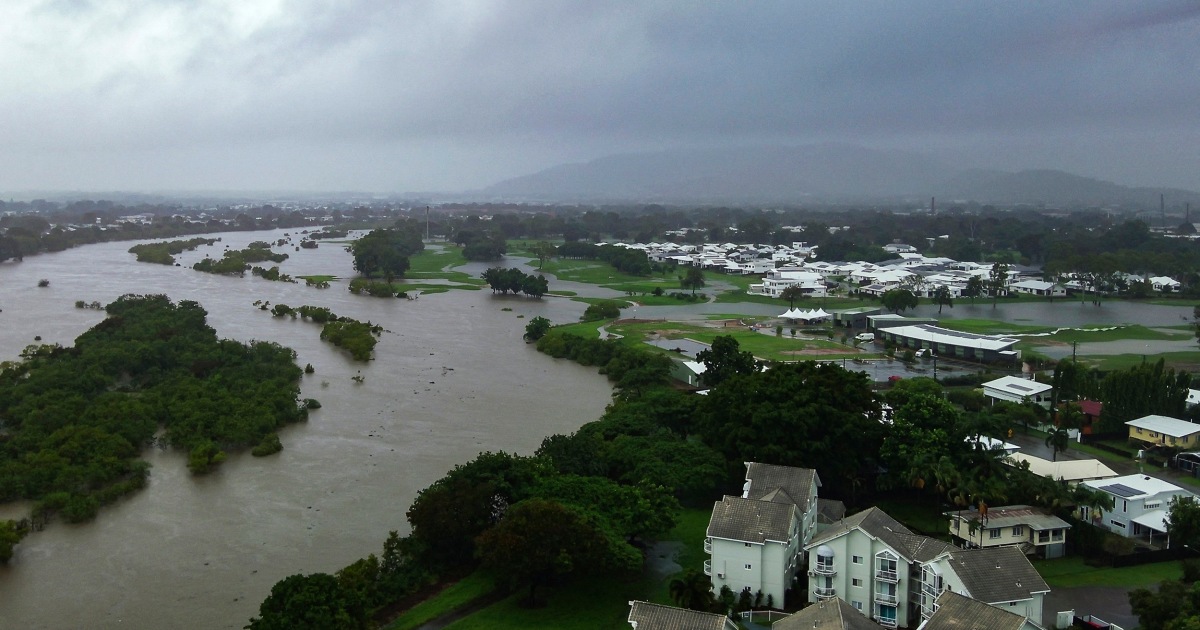Unprecedented Flooding: Understanding the Train Journey’s Role in the Catastrophic Deluge in Northeastern Australia
In recent weeks, northeastern Australia has been rocked by unprecedented flooding, a situation that has raised eyebrows and sparked discussions about climate resilience and infrastructure adequacy. Interestingly, this deluge has been linked to a seemingly innocuous train journey that, while it might not be the primary cause, has highlighted the vulnerabilities of local systems amidst changing weather patterns. This article delves into how this train trip became a focal point in understanding the catastrophic flooding and what it signifies for the future of the region.
The Train Journey and Its Unexpected Consequences
On a clear morning, passengers boarded a regional train in northeastern Australia, anticipating a smooth ride through the picturesque landscapes. However, as the journey progressed, weather conditions shifted dramatically. A sudden downpour, which meteorologists later identified as part of an unusual weather system, led to a rapid accumulation of rainwater.
While the train itself remained operational, the weather changes triggered a series of events that would culminate in severe flooding. The train’s movement through the region inadvertently spotlighted the area’s susceptibility to flooding, as it traversed tracks that had not been adequately prepared for such heavy rainfall. It became apparent that the infrastructure, including drainage systems and railway tracks, was not equipped to handle the intense deluge that followed.
Understanding the Weather Patterns
Experts quickly pointed to climate change as a significant factor contributing to these extreme weather events. The Australian Bureau of Meteorology reported that the region experienced record-breaking rainfall, attributed to a combination of climate variability and the effects of global warming. The heavy rains overwhelmed local rivers and creeks, leading to widespread flooding that affected communities and disrupted transportation.
- Climate Change: Increased atmospheric temperatures are causing more moisture to evaporate into the air, resulting in heavier rainfall during storms.
- Urbanization: As cities expand, natural drainage systems are often compromised, increasing the risk of flooding.
- Deforestation: The removal of trees that absorb rainfall can exacerbate flooding events.
This train journey became emblematic of the broader challenges faced by the region. It underscored the need for proactive measures to enhance infrastructure resilience in the face of increasingly erratic weather patterns.
The Impact of Flooding on Local Communities
The immediate aftermath of the unprecedented flooding was devastating for many communities. Homes were inundated, and essential services were disrupted, leaving residents grappling with the consequences of the deluge.
Human Stories Amidst the Crisis
Local residents shared harrowing accounts of their experiences during the flooding. Families were forced to evacuate their homes, seeking refuge in temporary shelters as floodwaters rose. The emotional toll of such events cannot be overstated; many individuals faced the loss of personal belongings, cherished memories, and a sense of security.
Community leaders began organizing relief efforts, mobilizing volunteers and resources to assist those affected. Donations poured in from across the country, illustrating the resilience and solidarity of Australians in times of crisis. However, the flooding also raised critical questions about long-term recovery strategies and the adequacy of support systems for those impacted.
Infrastructure Challenges and Solutions
The flooding has brought infrastructure issues to the forefront of public discourse. Experts have called for a comprehensive review of the region’s flood management systems, emphasizing the need for improved drainage, levees, and early warning systems. Some key areas of focus include:
- Upgrading Drainage Systems: Existing systems must be evaluated and enhanced to handle increased rainfall.
- Implementing Green Infrastructure: Strategies such as rain gardens and permeable pavements can help absorb excess rainwater.
- Community Education: Raising awareness about flood preparedness and response is essential for resilience.
Moreover, the integration of technology, such as real-time weather monitoring and predictive analytics, can aid in better forecasting and management of flood risks, ensuring that communities are better prepared for future events.
Looking Forward: Climate Resilience and Adaptation
The link between the train journey and the catastrophic flooding serves as a stark reminder of the pressing need for climate adaptation measures. As the world grapples with the reality of climate change, northeastern Australia must prioritize investments in infrastructure that can withstand extreme weather.
Government and Community Initiatives
In response to the flooding, local and state governments have initiated discussions on enhancing climate resilience strategies. These initiatives include:
- Funding for Infrastructure Projects: Increased budget allocations for flood management and infrastructure upgrades.
- Community Engagement: Involving residents in planning and decision-making processes to ensure that solutions meet local needs.
- Research and Innovation: Collaborating with universities and research institutions to develop cutting-edge solutions for flood management.
By fostering a collaborative approach, governments and communities can work together to mitigate the impacts of future flooding and build a more resilient future.
Conclusion: A Call to Action
The unprecedented flooding in northeastern Australia, sparked by a seemingly innocuous train journey, highlights the urgent need for action. As we navigate the complexities of climate change, it is imperative for communities, governments, and individuals to come together and prioritize resilience and adaptation strategies. By investing in infrastructure, embracing innovative solutions, and fostering community engagement, we can ensure that the lessons learned from this catastrophic event lead to a safer and more sustainable future for all.
In the wake of this disaster, the resilience of the affected communities shines through, reminding us that despite the challenges, hope and determination can lead to recovery and renewal. Let this be a turning point in how we approach climate resilience, infrastructure development, and community support in the face of adversity.
See more Your Daily Weather



